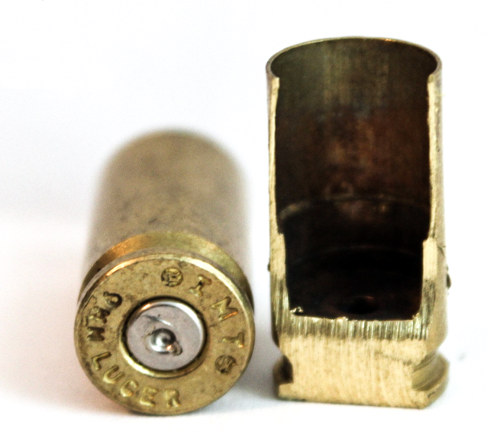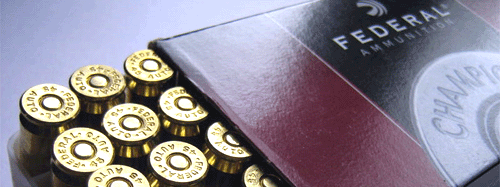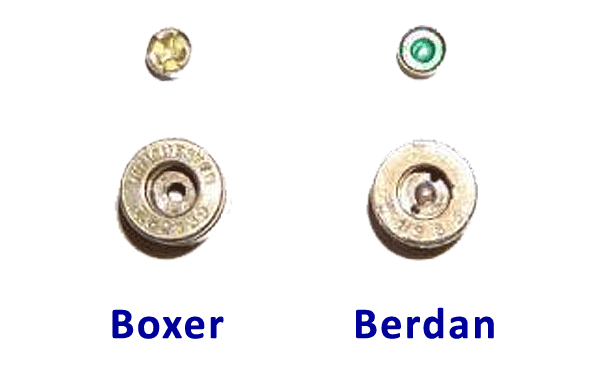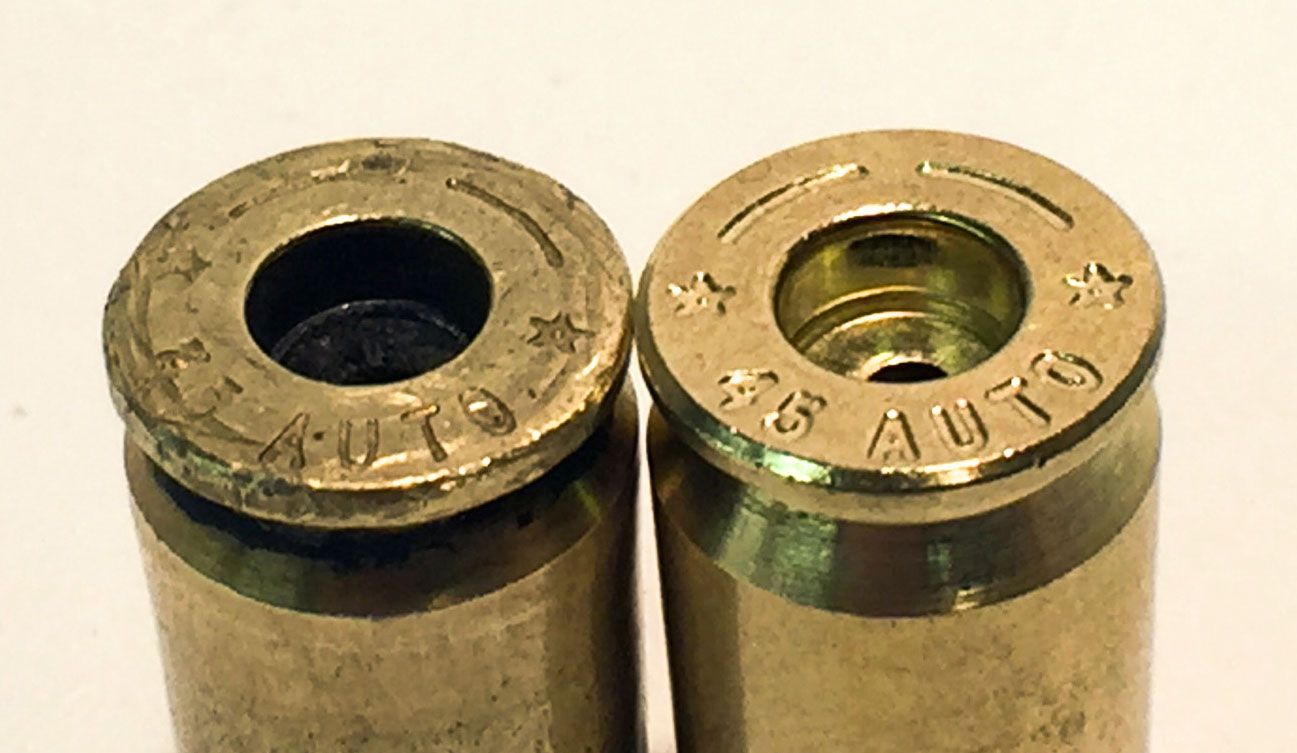The only reusable part of a fired cartridge is the case. This is fortunate for the reloader because the case is the single most expensive component. Also fortunate is the fact that there is plenty of brass lying around for the taking at just about every range.

As you probably know, not every case is reloadable. Here are a few tips to help you out when you're scrounging brass at the range.
Get rid of any steel or aluminum cases
You can't reload steel or aluminum cases, so you'll want to sort those out. Nickel-plated brass cases are reloadable however.
You can distinguish nickel-plated brass cases from plated steel cases using a magnet - it will stick to steel but not to brass.
Aluminum cases are much lighter than nickel plated brass, and the nickel plated brass cases are shinier, with almost a mirror-like
appearance. Aluminum cases have a dull grey, matte finish.
Be careful of 'brass' that isn't brass
The Sellier & Bellot 9mm Range Safe and Golden Bear .223 ammo shown below look like they are brass-cased, but the cases are made from
brass-plated steel. The look identical to brass, but can easily be separated out with a magnet.

Beware of AMERC brass
Brass with the headstamp AMERC is made by American Ammunition Inc in Miami, FL. It is the worst quality brass imaginable.
The flash holes are often off-center, the case diameter is out of spec, and it often splits on the first or second firing. Not only
do I not pick it up, when I find it I crush the case mouth with pliers to prevent some other reloader from experiencing the horror that is AMERC
brass.
"Stepped" 9mm Cases
Some 9mm cases have a pronounced internal step or shoulder (probably to prevent bullet setback on the original loading). These should not be reloaded.
The internal volume is smaller than normal so you'll experience a higher-than-normal pressure, and they often split at the shoulder when reloaded and fired.
Headstamps with this feature include IMT, Freedom Munitions, Ammoload, and others. You should sort these out and scrap them.

Some .45ACP ammo uses small pistol primers
Traditionally, all .45 ACP ammo used large pistol primers. A while back, several ammo companies began marketing 'non-toxic' .45 ACP ammo that
utilized small pistol primers. Recently, at least one company began using small primers in their regular (toxic?) .45 ACP ammo.
These cases are perfectly reloadable, however you should separate them from the .45 ACP cases with large primers so you don't accidentally try
to seat a large primer in a small pocket (it won't fit).

Discard any cases with pressure signs
Learn to recognize the signs of over-pressure on fired cases, then discard any cases that exhibit them. If a case has a
flattened, missing, or extruded primers, or an obvious imprint of the bolt face or extractor groove recess, then chances are that they
were fired with an over pressure charge, and might not be safe to reload.
Don't bother with Berdan primed cases
Most American-made ammo uses Boxer primers. Some foreign ammo uses Berdan primers. Boxer-primed cases are reloadable,
Berdan primed are not (using conventional methods). You can tell the difference by looking down into the case. If you see a
single centered flash hole, the case is Boxer primed (and reloadable). If you see two flash holes, the case is Berdan-primed and
should be left behind (or you can take them for scrap - brass is going for over $1 per pound now).

Learn to recognize many-times-fired cases
If you find a pile of brass at the range in one caliber, with various headstamps that are hard to read (from repeated collisions with a bolt
face), and a mix of silver and gold colored primers, chances are good that it was loaded a number of times and left behind by the
reloader that fired it.
You can pick it up and try to load it again, but before you do, ask yourself this question - "Why would a reloader leave this brass behind?"
The answer is, "Because it's worn out." You should probably throw it away, or take it for scrap.

On the other hand, if you find a shiny pile of brass in one caliber, with matching headstamps and primers, and an empty ammo box in the trash from the same manufacturer, it's a good bet that it is once-fired brass left behind by somebody that doesn't reload. If you don't pick it up, someone else will.